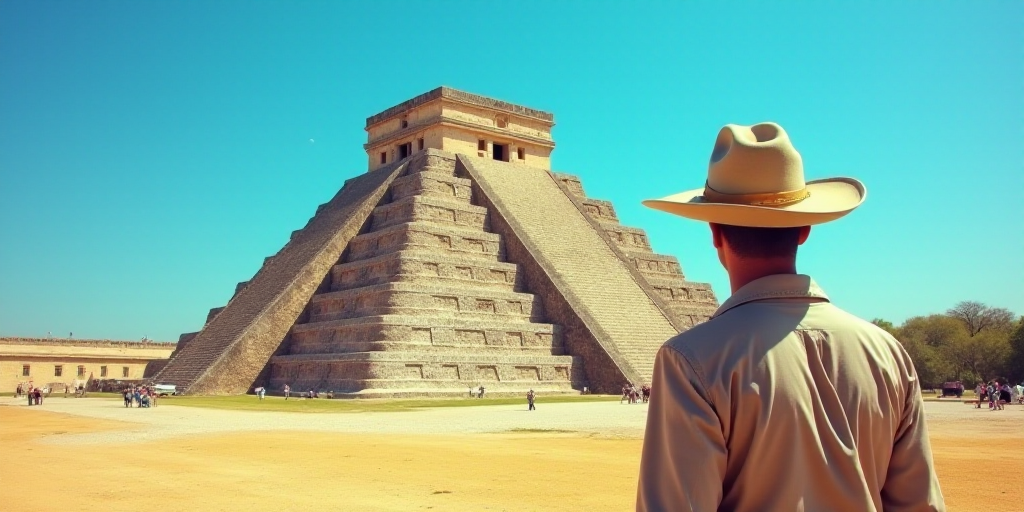Who is MrBeast and Why is He Relevant?
James ‘Jimmy’ Stephen Donaldson, known as MrBeast, visited Mexico and left a trail of controversy among the Mexican population. His fame for creating controversial content continued as he reportedly gained special privileges that allowed him to “transgress” Mexico’s historical and humanity-recognized heritage sites.
MrBeast’s Visit and the Controversy
On May 10, MrBeast shared a video on his social media platforms showcasing his visit to some of Mexico’s most important archaeological sites, including Chichén Itzá, the Temple of Kukulkán, Calakmul, and Balamché. In the footage, he allegedly arrived via helicopter and walked through restricted areas of the pre-Hispanic sites, which even Mexicans cannot freely explore or touch valuable archaeological artifacts.
The Mexican public’s pride was not silenced, and immediate criticism and ‘hate’ emerged regarding the abuse of trust given to the influencer.
Government Clarification
Federal authorities clarified that MrBeast and his team toured areas primarily open to the public, and access to restricted zones was authorized as part of scheduled visits, similar to local communities. They also mentioned that no drone flights occurred within El Castillo at Chichén Itzá, and several video scenes were dramatized or recreated for narrative purposes. For instance, the team did not descend from a helicopter or stay overnight at the archaeological site.
President Claudia Sheinbaum Pardo addressed the issue during her morning press conference, stating that MrBeast had the authorizations granted by the Instituto Nacional de Antropología e Historia (INAH). However, she warned that the situation would be reviewed to ensure he adhered to the terms of the permit.
INAH’s Stance
The INAH acknowledged that promoting such content can be beneficial if it sparks interest among new audiences, especially young people, to learn about and appreciate Mexico’s cultural heritage. Nevertheless, they emphasized the importance of disseminating accurate information and respecting legal and scientific guidelines that regulate these spaces.
Will INAH Sue MrBeast?
The INAH decided to file an administrative lawsuit against Full Circle Media, MrBeast’s representative.
In a statement, the federal agency explained that while they are open to audiovisual proposals contributing to the knowledge and dissemination of Mexico’s archaeological and cultural heritage, they strongly condemn those who exploit the goodwill of institutions to violate the terms of granted permissions.
Nos da gusto que los youtubers y todas y todos los jóvenes del mundo aprecien el valor de nuestras civilizaciones originarias
#MrBeast
El INAH condena a quienes, con afanes comerciales y fines de lucro privado, se atreven a desvirtuar el valor de las zonas arqueológicas, que son legado de nuestras culturas originarias y orgullo de nuestra nación. https://t.co/z2l1X5n9jK— INAH (@INAHmx) May 26, 2022
The INAH clarified that they did not authorize the dissemination of false information or the use of archaeological site images for commercial brand promotion with private profit intentions. They emphasized that the nation’s heritage, being public by nature, cannot be exploited by commercial enterprises. The separation between political and economic power is an unyielding principle of the Fourth Transformation.
For these reasons, the INAH filed an administrative lawsuit against the production company, demanding damages and public retraction for failing to comply with permit terms and misusing the archaeological heritage for private profit.
Key Questions and Answers
- Q: Who is MrBeast? A: James ‘Jimmy’ Stephen Donaldson, an American YouTuber known for creating controversial content.
- Q: What privileges did MrBeast receive in Mexico? A: He reportedly gained access to restricted archaeological areas and was allowed to film in zones typically off-limits to the public.
- Q: How did the Mexican public react to MrBeast’s visit? A: The public criticized MrBeast for allegedly abusing the trust given to him and violating regulations protecting Mexico’s archaeological sites.
- Q: What action did the INAH take? A: The INAH filed an administrative lawsuit against MrBeast’s production company for misusing archaeological heritage and violating permit terms.
- Q: Why is the INAH’s stance important? A: The INAH’s position highlights the need to respect and protect Mexico’s cultural heritage while promoting its appreciation among new audiences.






